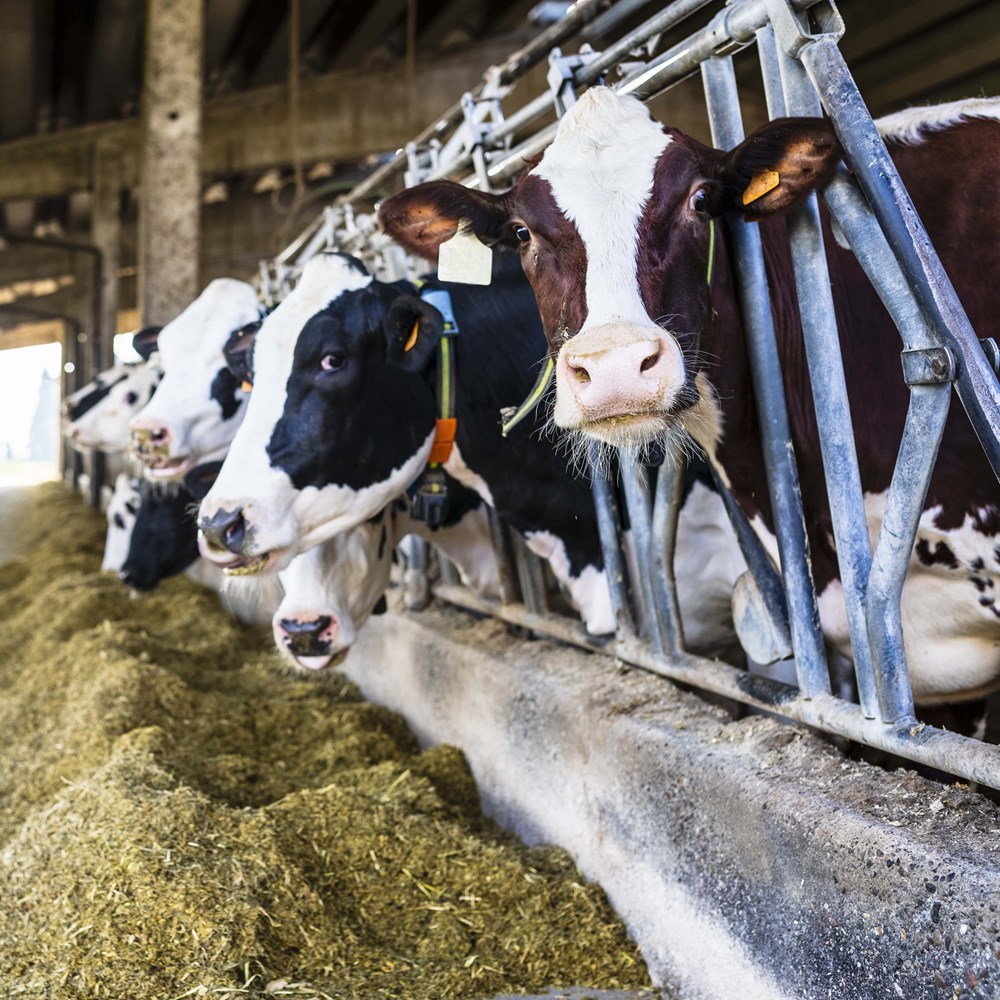Home-grown feeds
Is it possible to grow all feed requirements for the dairy cow on the farm?

The challenge
Dairy herd feeding systems lie along a spectrum, from the use of bought-in feed which requires no land but relies on the global drivers of production, climate and markets, to the use of homegrown feeds, which is dependent on local weather events and good crop husbandry.
The question arises whether systems at either end of the spectrum are feasible or profitable. What can we learn from these systems to benefit more conventional systems?

The research
The homegrown feeds trial is being undertaken at SRUC Dairy Research and Innovation Centre where 100 cows are on a system relying almost entirely on homegrown feeds for three lactations.
All of their feed (energy and protein requirements) are grown on farm with nutrients recycled into future crops. The ration consists of grazed grass, grass silage, red clover silage, forage maize, lucerne silage, crimped wheat, beans and is balanced with a purchased mineral. Two hectares of land per cow has been allocated.
The cows are milked three times per day. The ration alters slightly throughout the year depending on whether cows are indoors for one or two windows between milkings. They are never outside for more than two grazing periods.
Detailed data on animal performance, behaviour, fertility and health are being measured.
The results
The project has been run in 5-year phases, keeping all aspects of the system as consistent as possible in that time. So far, the results have shown that for the same milk output, improving grass silage quality reduces the requirement for homegrown wheat or beans.
Grassland management and grazing utilisation are central to minimising land demand and reliance on alternative crops.
The system has restricted output in high genetic merit cows, resulting in partial loss of genetic potential.
|
Year: 2015/16 |
Yield (kg/cow) |
Fat (%) |
Protein (%) |
Calving Interval (days) |
|
Home-grown select* |
8,133 |
4.17 |
3.38 |
388 |
|
Home-grown |
7,120 |
3.81 |
3.24 |
407 |
Feed costs were estimated at between 5.7 and 8.7ppl during the summer months respectively for select and control lines*
Feed costs were between 10.2 and 9.6ppl respectively during the winter months.
* 'select' genetic lines are females of top 5% genetic merit, based on milk solids;
* 'control' genetic lines are females of average genetic merit.
The impact
The SRUC system is not intended as a blueprint but to provide producers and policymakers with data on alternatives (wider options) to consider for integration into existing systems.
Related content

Dairy Research and Innovation Centre

